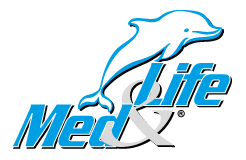Magnetoledtherapy in comprehensive pediatric rehabilitation
Keywords:
pediatric rehabilitation, magnetoledtherapy, Pulsed Magnetic Field LED-therapy, cerebral palsy, chronic juvenile arthritis, bone fractures in children, peripheral neuritis, LED light therapy
Summary:
LED light therapy with magnetostimulation (magnetoledtherapy) has a vast range of applications in the treatment of neurological, rheumatic and orthopedic illnesses. In some cases it serves as an alternative procedure to pharmacological treatment, in particular to nonsteroidal anti-inflammatory drugs.
Aim: The aim of this study was to discuss the use of magnetoledtherapy in the rehabilitation of children.
Materials and methods: This article is a review of selected literature and other available source materials.
Discussion: Due to biological hysteresis, therapeutic outcomes of magnetoledtherapy appear later than in the case of other physical therapy methods; they last longer, even up to several months after the exposure, thus leading to more beneficial treatment effects. Therapeutic methods available for very young people are limited due to various contraindications. When exposure conditions are carefully considered and accounted for, magnetoledtherapy can be applied even in infants, serving as a beneficial complement to kinesiotherapy. Children willingly participate in such treatment because magnetoledtherapy produces few side effects and has a positive effect on a patient’s well-being following the application. Selected indications for the use of this method in children include neuralgias, juvenile rheumatoid arthritis, collagenoses, aseptic necrosis, osteoporosis, tendinitis, tendovaginitis, bursitis, injuries without a disruption in tissue continuity including sprains, bruises and fractures, improvement in the quality and time of healing, burns, effects of exposure to sunlight and laser light, neonatal physiological jaundice, dermatoses including dermatitises, acne, herpes, vitiligo, psoriasis, central nervous system lesions, dental periapical lesions, cerebral palsy, peripheral nerve lesions, especially perinatal brachial plexus palsy, polyneuropathies, amyotrophic lateral sclerosis, spinal muscular atrophy, muscular dystrophies, congenital bone deformations, neuroses, sleep disorders, stress, Attention Deficit Hyperactivity Disorder (ADHD), speech impairment therapy and therapy for children with Down’s syndrome. Therefore, this therapy is widely applicable. In the treatment of children, it is indispensible to strictly follow application parameters and observe specifications concerning the size of the area that is exposed to treatment.
Source:
Polish Annals Of Medicine I 9 (2012) 163 – 169
Authors:
Kwiecień-Czerwieniec I.a, Woldańska-Okońskab M.b
a The John Paul II Pediatric Center, Early Intervention Unit in Sosnowiec, Poland
b Department of Rehabilitation and Physical Medicine, Division of Physiotherapy, Medical University of Lodz, Poland

